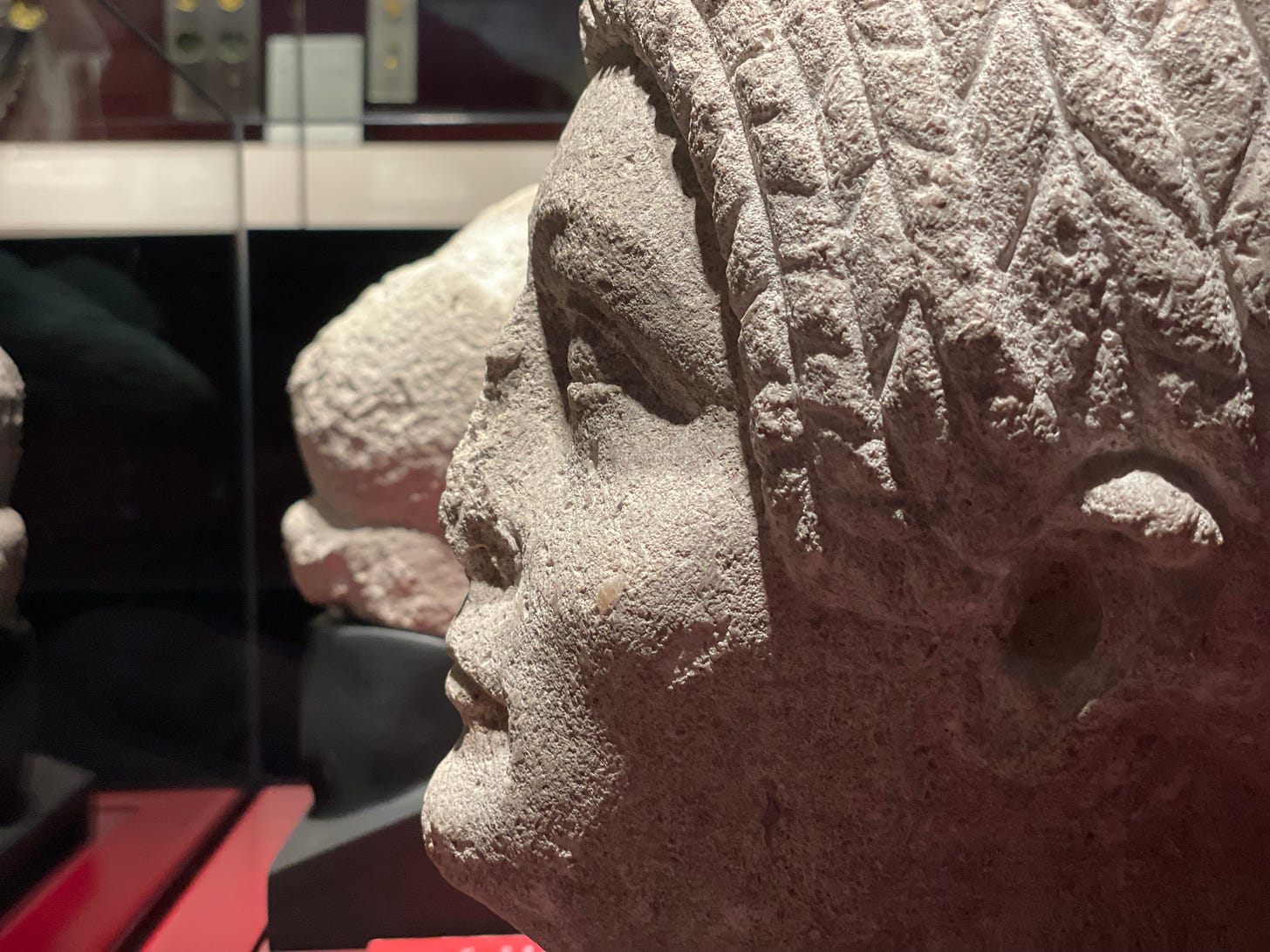Headless, but with an elaborate hairstyle
No place, location or region is set in stone. They evolve and grow, and this weeks story is how something exceptional has come to light from a route of destruction and anger.
Exceptional in quality and style, these carvings are amongst the greatest finds ever from Roman Britain.
Ironically we only know about them because the High Speed 2 (HS2) route is ripping its way through Chilterns countryside and ancient woodlands as the government seeks to speed up links between London and the Midlands. Our region has been carved up by railways and inland waterways since the 18th century, almost always resulting in strong local opposition. Berkhamsted Castle was carved up to accommodate the railway linking London and the Midlands in the 19th century.
Now there are strong heritage protections, hence all the archaeological excavations that have uncovered an extraordinary array of finds along the route including a wooden henge, Saxon burials and these exceptional Roman carvings.
Roman statue heads
The three stone heads are part of a fabulous find by L-P Archeology during the HS2 excavations beneath the derelict Norman church at Stoke Mandeville near Aylesbury. St Mary’s was built in 1080, and renovated in the 13th, 14th and 17th centuries before being abandoned in 1880. Demolished in 1966, the remaining ivy-covered lumps and bumps were known only to local historians and dog walkers.
I visited the huge excavation site in May 2021, amidst tight HS2 security and no filming or photography allowed. Inside the huge temporary shed with bored security guards looking at their phones, from the viewing platform overlooking the excavation, the archaeologists gave excited commentary of what they were doing and what we could see. I recall many lumps and excavated clay-covered bumps, discarded bricks and mortar from the foundations and more elaborate tombs. A little underwhelming. Small flags in the soil to show positions of bodies still there - over 3,000 were removed and reinterred at a nearby site in Buckinghamshire.
There was no word of these finds (and the Roman glass jars), so perhaps they hadn’t found them yet?
Discover Bucks Museum
On temporary display were the heads of a man and a women, the women in superb condition, the man less so. Not on display, was a third badly damaged head of girl, perhaps making up a family group? The heads of the man and women have matching shoulders. It was her elaborate hairstyle that helped the experts date the carvings to AD100 - 150. To be in such superb condition after 2,000 years lying in a ditch. Incredible!
Buried beneath the Norman church, the archeologists believe they come from a Roman mausoleum that stood on the site long before the arrival of the Normans. It was common practice to assimilate local deities and holy sites into the Christian church with many built on the same locations.
I wonder how many more of these are hidden at religious sites beneath Britain?
The two heads were loaned to the Discover Bucks Museum before being returned at the end of October for further analysis and study. I hope they will be back on permanent display. They deserve our attention.
Quick links
Located in the old town of Aylesbury, the Discover Bucks Museum serves the local community well, including artists, families and anyone interested in the filling the many gaps that make up the history of Buckinghamshire.
I’m no HS2 fan, but in the interest of fairness, I include their official website which is full of rail puff, plans and promises.
At first drive-through, this busy Buckinghamshire town is not a pretty sight. Aylesbury is a town that has kept its historic heart well and truly hidden, marooned on a little island cut off by busy roads full of traffic rushing through on their way elsewhere. Read about the appreciation of Aylesbury, from my blog “A Year in the Chilterns.”
Read more about what has been uncovered during the HS2 construction including decapitated Roman skeletons found on HS2 route near Aylesbury



